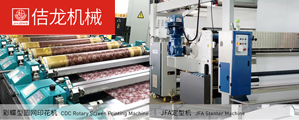Xinjiang cotton still sells well despite American pressure
Jul 13, 2021 | by Zhao Xinhua

In March, an early announcement by H&M brought the Xinjiang cotton incident from the industry circle to the wide attention of society. But for many friends outside the circle, may not be clear about the causes and consequences of the Xinjiang cotton incident.
In fact, people in the industry were not particularly surprised about this issue at the beginning. The Xinjiang cotton incident was already being performed last year, but the brand apparel companies’ boycott has made this matter enter the public view and triggered a wider range of discussion.
As of January 14, 2021, the United States Customs and Border Protection stated that the United States will ban the import of all cotton and tomato products from Xinjiang, China. The ban applies to cotton yarn, clothing and textiles made from cotton grown in Xinjiang.
Then, brands represented by H&M, Nike, Adidas, etc. boycott Xinjiang cotton—the root cause of their boycott is because of the same interests.
As to why they choose Xinjiang cotton, we can take a case study:
Data show that in the 1950s and 1960s, the proportion of Japanese cotton textiles in the import market of the United States increased from 17.4 percent in 1951 to more than 60 percent in 1956. The low-cost import products crushed the U.S. textile industry, and the textile war between Japan and the United States lasted for half a century, and it was finally eased by the Japanese government and textile industry implementing the “Voluntary Export Restrictions (VER)” and the “Japan-U.S. Cotton Products Agreement.”
Now, with the rapid growth of China’s textile industry, the textile sector has become a competitive market between China and the United States -- and, of course, Xinjiang cotton has added another dimension to the trade dispute that has been raging between the two countries since 2018.
The world cotton is in China, and the Chinese cotton is in Xinjiang. Statistics show that more than half of Xinjiang’s farmers, or about 7 million people, are engaged in cotton production, with ethnic minorities accounting for about 70 percent. Xinjiang cotton is the main source of income for local growers, especially farmers in the Uighur populated areas of southern Xinjiang. The earnings of cotton and its downstream processed products are vital to the livelihoods of millions of Xinjiang farmers.
It is reported that due to the unique natural resources in Xinjiang, the output and quality of cotton rank first in the world’s major cotton production areas. The huge supply and stable quality not only promote the rapid development of China’s cotton textile industry, but also contributed to the domestic apparel manufacturing industry.
Nowadays, many foreign clothing brands in the market choose to manufacture in Chinese factories from raw materials to production and processing. In recent years, Chinese local clothing brands like Li Ning, ANTA, Xtep, GXG, Heilan Home and so on are deeply loved by Chinese people. These local brands not only advance by leaps in design and innovation level, but also have excellent quality!
Like other emerging industries, China’s apparel industry is slowly changing the global apparel market. This change is part of a broader trend.
Data show that since 2015, the United States has begun to intentionally reduce the import proportion of China’s textile products, diverting more orders to India and Vietnam, but so far, China still occupies nearly 40 percent of the global textile and apparel export market share.
Especially last year, driven by anti-pandemic supplies, China’s textile and apparel exports reached USD 291.2 billion in 2020, a year-on-year increase of 9.5 percent, setting a new high since 2015. Since this year, China’s exports of textile materials and products have reached nearly 400 billion yuan, a 27.7 percent increase over the previous year, among which the export from Xinjiang to the United States has increased by an astonishing 113 percent, totaling 64.4 million dollars.
The latest data also showed that China’s cotton imports increased to 1.31 million tons in the first five months of this year, up 70 percent year-on-year, on the back of the steady growth of cotton output.








